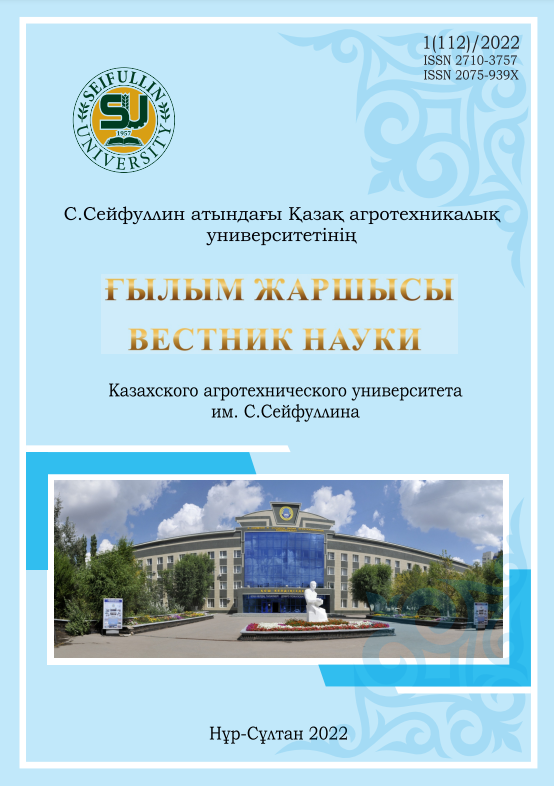ANTIBIOTIC RESISTANCE OF SALMONELLA SPP. STRAINS ISOLATED FROM ANIMALS AND BIRDS IN THE TERRITORY OF NORTHERN KAZAKHSTAN
DOI:
https://doi.org/10.51452/kazatu.2022.1(112).937Keywords:
Salmonella enteritidis; Salmonella typhimurium; antibiotic resistance; food safety; food pathogens; polymerase chain reaction; resistance phenotype.Abstract
Salmonella are the main zoonotic foodborne pathogens. The emergence and spread of resistant forms of pathogenic bacteria is a global veterinary and public health problem. The present study is aimed at studying the antibiotic resistance of Salmonella strains isolated in the territory of Northern Kazakhstan. For this, an analysis of the phenotypic and genotypic resistance of Salmonella strains isolated from the biological material of cattle, small cattle, pigs and chickens was carried out. In the work, we used generally accepted methods for the isolation and identification of microorganisms of the genus Salmonella, which also included the use of chromogenic media and classical biochemical tests. Antimicrobial susceptibility testing was performed using the Kirby-Bauer disk diffusion method. The detection of genes encoding resistance to antibacterial drugs was carried out by polymerase chain reaction (PCR). 27 Salmonella isolates were isolated and identified between January and December 2021. The predominant number of isolates belonged to the serovars Salmonella enteritidis and Salmonella typhimurium. Antibacterial susceptibility testing showed 96.3% of the isolates were resistant to at least one drug. The greatest number of Salmonella isolates showed resistance to tetracycline (62.9%), furazolidone (59.3%), furadonin (51.8%) and nalidixic acid (51.8%) drugs. PCR testing showed the presence of resistance genes to beta-lactams, aminoglycosides, tetracyclines, sulfonamides and quinolones.
As a result of the research, data were obtained on the resistance of Salmonella strains isolated from animals and birds in the Northern region of Kazakhstan. The findings highlight the potential for transmission of antimicrobial resistance not only to animals but also to humans, and highlight the need to strengthen efforts to combat antibiotic resistance. Constant monitoring at all stages "from farm to fork" will prevent the spread of resistance to antibacterial drugs.

